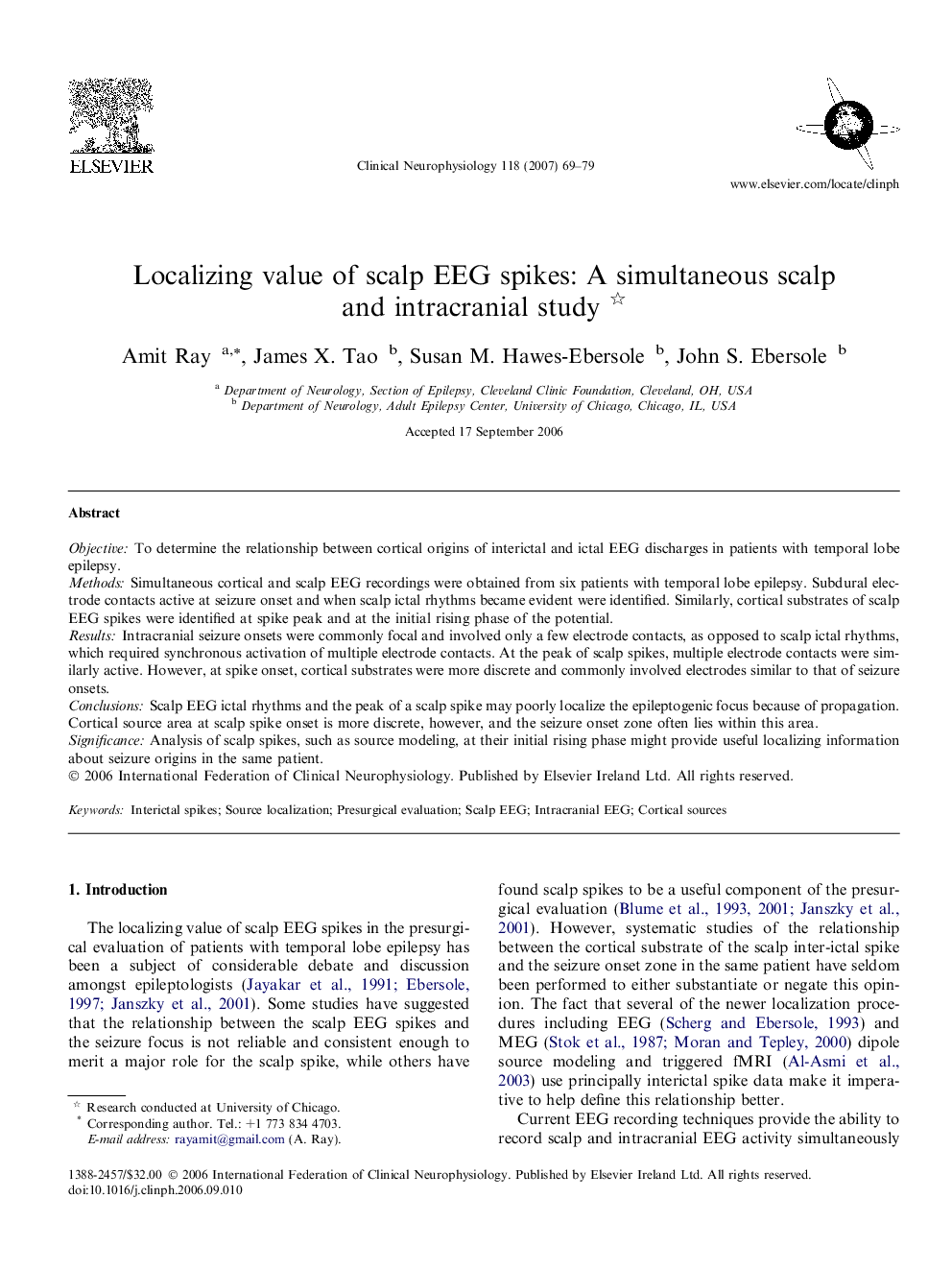| Article ID | Journal | Published Year | Pages | File Type |
|---|---|---|---|---|
| 3048172 | Clinical Neurophysiology | 2007 | 11 Pages |
ObjectiveTo determine the relationship between cortical origins of interictal and ictal EEG discharges in patients with temporal lobe epilepsy.MethodsSimultaneous cortical and scalp EEG recordings were obtained from six patients with temporal lobe epilepsy. Subdural electrode contacts active at seizure onset and when scalp ictal rhythms became evident were identified. Similarly, cortical substrates of scalp EEG spikes were identified at spike peak and at the initial rising phase of the potential.ResultsIntracranial seizure onsets were commonly focal and involved only a few electrode contacts, as opposed to scalp ictal rhythms, which required synchronous activation of multiple electrode contacts. At the peak of scalp spikes, multiple electrode contacts were similarly active. However, at spike onset, cortical substrates were more discrete and commonly involved electrodes similar to that of seizure onsets.ConclusionsScalp EEG ictal rhythms and the peak of a scalp spike may poorly localize the epileptogenic focus because of propagation. Cortical source area at scalp spike onset is more discrete, however, and the seizure onset zone often lies within this area.SignificanceAnalysis of scalp spikes, such as source modeling, at their initial rising phase might provide useful localizing information about seizure origins in the same patient.
